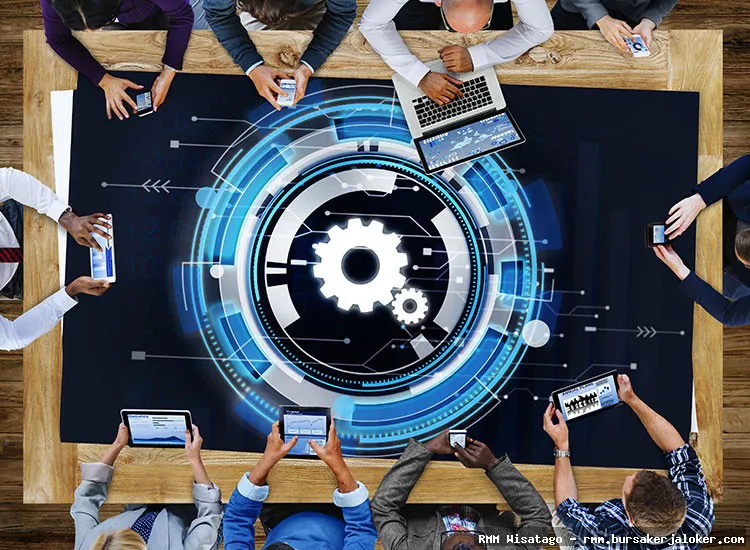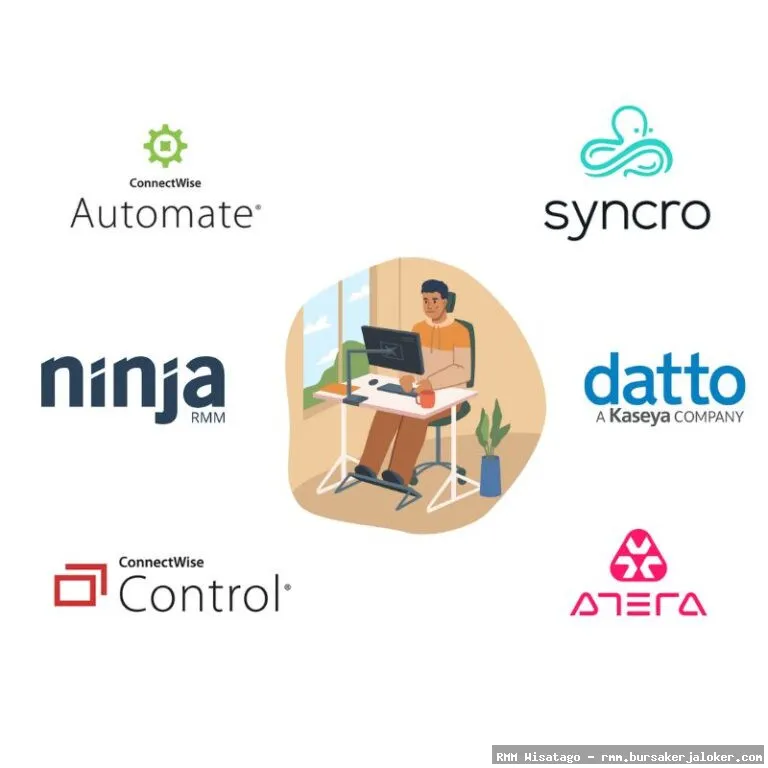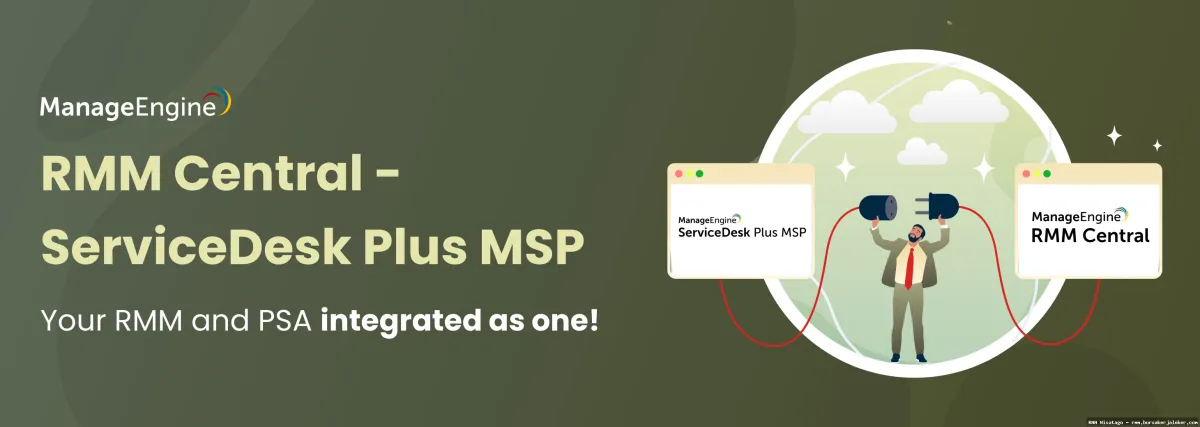RMM For Compliance Management: Complete Guide, Features and Details
In today’s complex regulatory environment, businesses face an ever-increasing burden of compliance. From data privacy regulations like GDPR and HIPAA to industry-specific standards like PCI DSS, maintaining compliance can feel like a never-ending battle. The consequences of non-compliance can be severe, ranging from hefty fines and legal repercussions to reputational damage and loss of customer trust. This is where Remote Monitoring and Management (RMM) tools step in, offering a powerful solution for streamlining and automating compliance management processes.
RMM software, traditionally used by Managed Service Providers (MSPs) to remotely manage and monitor client IT infrastructure, is increasingly being adopted by internal IT departments for its robust capabilities. These capabilities extend beyond basic monitoring and maintenance to encompass crucial compliance-related tasks such as patch management, vulnerability scanning, security auditing, and reporting. By leveraging RMM, organizations can proactively identify and address compliance gaps, reducing the risk of violations and improving overall security posture.

This article provides a comprehensive guide to using RMM for compliance management. We will explore the key features of RMM platforms that contribute to compliance efforts, discuss how RMM can help meet the requirements of various regulations and standards, and offer practical insights into implementing an RMM-based compliance strategy. Whether you’re an MSP looking to enhance your compliance offerings or an internal IT team seeking to simplify your compliance processes, this guide will provide valuable information and actionable steps to leverage RMM for effective compliance management.
What is RMM and How Does it Work?
Remote Monitoring and Management (RMM) software is a platform designed to remotely monitor and manage IT infrastructure, including servers, desktops, laptops, and mobile devices. It provides a centralized dashboard that allows IT professionals to oversee the health and performance of these devices, automate routine tasks, and proactively address potential issues before they cause disruption. RMM solutions typically operate by installing an agent on each managed device, which collects data and transmits it back to the central RMM server.
Key Components of an RMM Solution:
- Agent Software: Installed on each managed device to collect data and execute commands.
- Central Dashboard: A web-based interface providing a centralized view of the entire IT infrastructure.
- Alerting and Notifications: Configurable alerts triggered by specific events or conditions, such as high CPU usage or failed login attempts.
- Automation Engine: Allows for the creation and execution of automated tasks, such as patch management, script deployment, and software updates.
- Reporting and Analytics: Provides detailed reports on system performance, security vulnerabilities, and compliance status.
How RMM Works:
- Agent Deployment: RMM agents are installed on all devices to be managed.
- Data Collection: Agents continuously collect data on system performance, security events, and software inventory.
- Centralized Monitoring: Data is transmitted to the central RMM dashboard for real-time monitoring.
- Alerting and Remediation: Alerts are triggered based on predefined thresholds, and automated remediation actions can be configured.
- Reporting and Analysis: Comprehensive reports are generated to provide insights into system health, security posture, and compliance status.
RMM Features for Compliance Management
RMM platforms offer a range of features that are directly relevant to compliance management. These features enable organizations to automate compliance-related tasks, monitor compliance status, and generate reports for auditors.
Patch Management
Keeping systems up-to-date with the latest security patches is crucial for protecting against vulnerabilities and meeting compliance requirements. RMM solutions automate the patch management process, allowing IT teams to schedule and deploy patches across all managed devices. This ensures that systems are protected against known vulnerabilities and helps maintain compliance with regulations such as PCI DSS and HIPAA.
Vulnerability Scanning
RMM platforms often include vulnerability scanning capabilities, which can identify security weaknesses in systems and applications. These scans can be scheduled to run regularly, providing ongoing visibility into the organization’s security posture. By identifying and addressing vulnerabilities proactively, organizations can reduce the risk of security breaches and maintain compliance with regulations such as GDPR and NIST.
Security Auditing
RMM solutions can perform security audits to assess the configuration of systems and applications against security best practices and compliance requirements. These audits can identify misconfigurations, weak passwords, and other security vulnerabilities. By addressing these issues, organizations can strengthen their security posture and improve their compliance with regulations such as SOC 2 and ISO 27001.
Endpoint Security Management
RMM platforms provide tools for managing endpoint security, including antivirus software, firewalls, and intrusion detection systems. These tools can be used to ensure that all endpoints are protected against malware and other threats. By managing endpoint security centrally, organizations can reduce the risk of security incidents and maintain compliance with regulations such as HIPAA and PCI DSS.
Reporting and Documentation
RMM solutions generate detailed reports on system performance, security vulnerabilities, and compliance status. These reports can be used to demonstrate compliance to auditors and stakeholders. RMM platforms also provide documentation features that allow organizations to track compliance-related activities, such as patch deployments and security audits.
Remote Access and Control
Secure remote access is essential for troubleshooting and resolving issues on managed devices. RMM platforms provide secure remote access capabilities that allow IT professionals to connect to devices remotely and perform maintenance tasks. This can be particularly useful for addressing compliance issues or responding to security incidents.
How RMM Helps Meet Specific Compliance Requirements
RMM can be instrumental in achieving and maintaining compliance with various regulations and standards. Here’s how it addresses some common compliance requirements:
GDPR (General Data Protection Regulation)
GDPR focuses on protecting the personal data of EU citizens. RMM helps with GDPR compliance by:
- Data Inventory and Mapping: Identifying and documenting where personal data is stored within the organization’s IT infrastructure.
- Access Control: Implementing and enforcing access controls to limit access to personal data to authorized personnel.
- Security Monitoring: Monitoring systems for security breaches and unauthorized access to personal data.
- Data Encryption: Ensuring that personal data is encrypted both in transit and at rest.
- Incident Response: Providing tools for detecting and responding to data breaches in a timely manner.
HIPAA (Health Insurance Portability and Accountability Act)
HIPAA regulates the privacy and security of protected health information (PHI). RMM assists with HIPAA compliance by:
- Access Control: Restricting access to PHI to authorized users and systems.
- Audit Logging: Tracking access to PHI and generating audit logs for compliance reporting.
- Security Risk Assessments: Identifying and mitigating security risks to PHI.
- Patch Management: Ensuring that systems are patched against known vulnerabilities that could compromise PHI.
- Data Backup and Recovery: Implementing data backup and recovery procedures to protect against data loss.
PCI DSS (Payment Card Industry Data Security Standard)
PCI DSS is a set of security standards for organizations that handle credit card data. RMM supports PCI DSS compliance by:
- Vulnerability Scanning: Regularly scanning systems for vulnerabilities that could be exploited to steal credit card data.
- Patch Management: Keeping systems up-to-date with the latest security patches.
- Firewall Management: Configuring and maintaining firewalls to protect cardholder data.
- Access Control: Restricting access to cardholder data to authorized personnel.
- Security Information and Event Management (SIEM) Integration: Integrating with SIEM systems to monitor security events and detect potential breaches.
SOC 2 (System and Organization Controls 2)
SOC 2 is an auditing procedure that ensures service providers securely manage data to protect the interests of the organization and the privacy of its clients. RMM aids in SOC 2 compliance by:
- Security: Implementing security controls to protect data against unauthorized access, use, or disclosure.
- Availability: Ensuring that systems and data are available to authorized users when needed.
- Processing Integrity: Verifying that data processing is accurate, complete, and timely.
- Confidentiality: Protecting confidential information from unauthorized disclosure.
- Privacy: Ensuring that personal information is collected, used, retained, and disclosed in accordance with applicable privacy policies.
Implementing an RMM-Based Compliance Strategy
Implementing an RMM-based compliance strategy requires careful planning and execution. Here are some key steps to consider:

1. Define Compliance Requirements
The first step is to identify the specific compliance regulations and standards that apply to your organization. This will help you determine the specific requirements that need to be addressed.
2. Assess Current Compliance Posture
Conduct a thorough assessment of your current compliance posture to identify any gaps or weaknesses. This assessment should include a review of your policies, procedures, and technical controls.
3. Select an RMM Solution
Choose an RMM solution that meets your specific compliance requirements. Consider factors such as the features offered, the ease of use, and the cost.
4. Configure the RMM Platform
Configure the RMM platform to monitor and manage your IT infrastructure in accordance with your compliance requirements. This may involve setting up alerts, configuring patch management schedules, and implementing security policies.
5. Automate Compliance Tasks
Automate as many compliance-related tasks as possible using the RMM platform. This will help to reduce the risk of errors and improve efficiency.
6. Monitor and Report
Continuously monitor your compliance status using the RMM platform. Generate regular reports to track progress and identify any areas that need improvement.
7. Train Staff
Provide training to IT staff on how to use the RMM platform for compliance management. This will ensure that they are able to effectively monitor and manage compliance risks.
8. Regularly Review and Update
Regularly review and update your RMM-based compliance strategy to ensure that it remains effective and aligned with changing regulations and standards. Modern businesses often seek ways to streamline their processes, and ERP can be a key component of such efforts
.
Choosing the Right RMM Solution for Compliance
Selecting the right RMM solution is crucial for successful compliance management. Consider these factors when evaluating different RMM platforms:
Compliance-Specific Features
Look for RMM solutions that offer features specifically designed for compliance management, such as vulnerability scanning, security auditing, and reporting. Some RMMs may offer pre-built compliance templates or integrations with compliance frameworks.
Scalability
Choose an RMM solution that can scale to meet your organization’s needs. Consider the number of devices and users that need to be managed, as well as the potential for future growth.
Integration Capabilities
Ensure that the RMM solution integrates with other security and compliance tools, such as SIEM systems, vulnerability management platforms, and identity and access management (IAM) solutions.
Reporting and Analytics
Select an RMM solution that provides comprehensive reporting and analytics capabilities. This will allow you to track compliance status, identify trends, and generate reports for auditors.
Vendor Reputation and Support
Choose a reputable RMM vendor with a proven track record of providing reliable and secure solutions. Consider the level of support offered by the vendor, including documentation, training, and technical assistance.
Conclusion
RMM solutions offer a powerful and effective way to streamline and automate compliance management processes. By leveraging the features of RMM platforms, organizations can proactively identify and address compliance gaps, reduce the risk of violations, and improve their overall security posture. From patch management and vulnerability scanning to security auditing and reporting, RMM provides the tools and capabilities needed to meet the requirements of various regulations and standards. By implementing an RMM-based compliance strategy, organizations can simplify their compliance efforts, reduce costs, and improve their overall business performance.

The key to success lies in choosing the right RMM solution for your specific needs and implementing a well-defined compliance strategy. By carefully evaluating different RMM platforms, configuring the platform to meet your compliance requirements, and automating compliance tasks, you can ensure that your organization remains compliant with all applicable regulations and standards. In the ever-evolving landscape of compliance, RMM offers a valuable tool for navigating the complexities and maintaining a strong security and compliance posture.
Ultimately, investing in an RMM solution for compliance management is an investment in the long-term security and stability of your organization. By proactively addressing compliance risks and automating compliance processes, you can protect your business from the costly consequences of non-compliance and build a foundation for sustainable growth.
Frequently Asked Questions (FAQ) about RMM for compliance management
How can a Remote Monitoring and Management (RMM) platform help my business achieve and maintain compliance with industry regulations like HIPAA or PCI DSS?
An RMM platform provides numerous features that significantly aid in achieving and maintaining regulatory compliance. For example, it automates patch management, ensuring systems are up-to-date with the latest security fixes, a crucial requirement for HIPAA and PCI DSS. RMM solutions offer robust endpoint monitoring, alerting IT teams to potential vulnerabilities or unauthorized access attempts. They also facilitate detailed audit trails, logging system activities and changes, which are essential for demonstrating compliance during audits. Furthermore, RMM tools can enforce security policies across all managed devices, such as password complexity requirements and disk encryption, strengthening overall security posture and simplifying compliance management. By automating these tasks and providing centralized visibility, RMM reduces the risk of non-compliance and streamlines the audit process.
What specific features of an RMM solution should I prioritize when looking to improve compliance management and reduce the risk of data breaches?
When selecting an RMM solution for compliance and data breach prevention, prioritize features that offer robust security and control. Patch management automation is critical for addressing known vulnerabilities promptly. Endpoint detection and response (EDR) capabilities are also important for identifying and mitigating threats in real-time. Look for strong access control features, including multi-factor authentication (MFA) and role-based access control (RBAC), to limit unauthorized access to sensitive data. Data encryption, both at rest and in transit, is another essential feature. Finally, a comprehensive reporting and auditing module provides the necessary documentation to demonstrate compliance and investigate security incidents effectively. A combination of these features will significantly enhance your organization’s security posture and reduce the likelihood of data breaches and compliance violations. Regular security assessments, vulnerability scanning and security information and event management (SIEM) integration are also beneficial.
How can using an RMM tool for security compliance help reduce the overall costs associated with IT audits and regulatory fines?
Using an RMM tool for security compliance can significantly reduce costs associated with IT audits and potential regulatory fines. By automating tasks like patch management, vulnerability scanning, and security policy enforcement, RMM reduces the manual effort required for compliance. This automation also minimizes the risk of human error, which can lead to costly security breaches and non-compliance penalties. RMM platforms provide detailed audit trails and reporting capabilities, streamlining the audit process and making it easier to demonstrate compliance to auditors. This reduces the time and resources required for audits, lowering audit costs. Furthermore, by proactively identifying and mitigating security threats, RMM helps prevent data breaches and other security incidents that could result in substantial regulatory fines and reputational damage. Investing in an RMM solution for compliance is a proactive approach that can save organizations significant money in the long run.